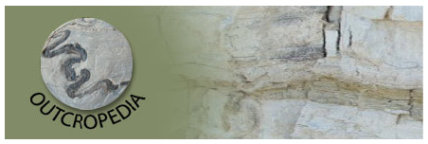Halfway gneiss with gently W-dipping mylonitic foliation, looking North. There is a horizontal stretching lineation on the blocks in the foreground. At the back, the mapping case on the outcrop indicates the orientation of the foliation; here it is dipping steeply North. In fact, the outcrop shows a km-scale fold with gently W plunging axis (parallel to the stretching lineation) and vertical limbs.
It is unlikely that this is the original geometry of the mylonite, so we deal with a gently dipping mylonite zone (thrust?? extensional decollement??) which was folded in NS shortening. The mylonite is cut by intrusions that belong to the Dalgaringa supersuite, and is therefore older than 1970Ma, and belongs to deformation in the Glenburg orogeny, not the Capricorn orogeny; the folding may be of Capricorn orogeny age
PhotoID466
Halfway gneiss with gently W-dipping mylonitic foliation, looking North. There is a horizontal stretching lineation on the blocks in the foreground. At the back, the mapping case on the outcrop indicates the orientation of the foliation; here it is dipping steeply North. In fact, the outcrop shows a km-scale fold with gently W plunging axis (parallel to the stretching lineation) and vertical limbs.
It is unlikely that this is the original geometry of the mylonite, so we deal with a gently dipping mylonite zone (thrust?? extensional decollement??) which was folded in NS shortening. The mylonite is cut by intrusions that belong to the Dalgaringa supersuite, and is therefore older than 1970Ma, and belongs to deformation in the Glenburg orogeny, not the Capricorn orogeny; the folding may be of Capricorn orogeny age
PhotoID466
Photograph: Cees Passchier
